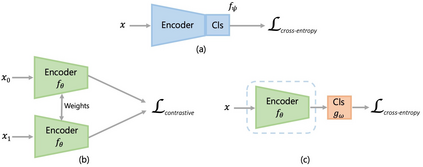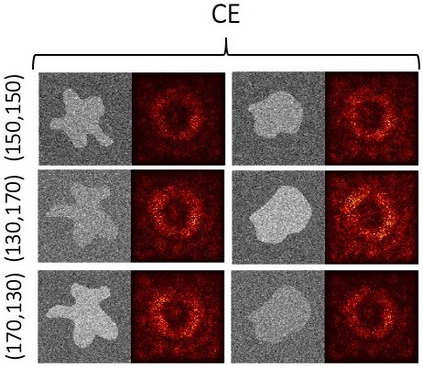Convolutional Neural Networks (CNNs) are widely used for image classification in a variety of fields, including medical imaging. While most studies deploy cross-entropy as the loss function in such tasks, a growing number of approaches have turned to a family of contrastive learning-based losses. Even though performance metrics such as accuracy, sensitivity and specificity are regularly used for the evaluation of CNN classifiers, the features that these classifiers actually learn are rarely identified and their effect on the classification performance on out-of-distribution test samples is insufficiently explored. In this paper, motivated by the real-world task of lung nodule classification, we investigate the features that a CNN learns when trained and tested on different distributions of a synthetic dataset with controlled modes of variation. We show that different loss functions lead to different features being learned and consequently affect the generalization ability of the classifier on unseen data. This study provides some important insights into the design of deep learning solutions for medical imaging tasks.
翻译:在包括医学成像在内的各个领域,革命神经网络(CNNs)被广泛用于图像分类,在包括医学成像在内的各个领域,大多数研究都把交叉孔虫作为这种任务的损失功能,但越来越多的方法已经转向以对比性学习为基础的损失家庭,尽管经常使用精确性、敏感性和特殊性等性能衡量标准来评价CNN分类人员,但这些分类人员实际学习的特征很少被确定,它们对分配外测试样品分类性能的影响也没有得到充分探讨。在本文中,出于肺结核分类这一现实世界性任务的动机,我们研究了CNN在对具有受控变异模式的合成数据集的不同分布进行培训和测试时所学到的特征。我们发现,不同的损失功能导致不同的特征正在学习,从而影响到分类人员对无形数据的一般化能力。本研究报告对医疗成像任务的深层次学习解决方案的设计提供了一些重要的见解。










